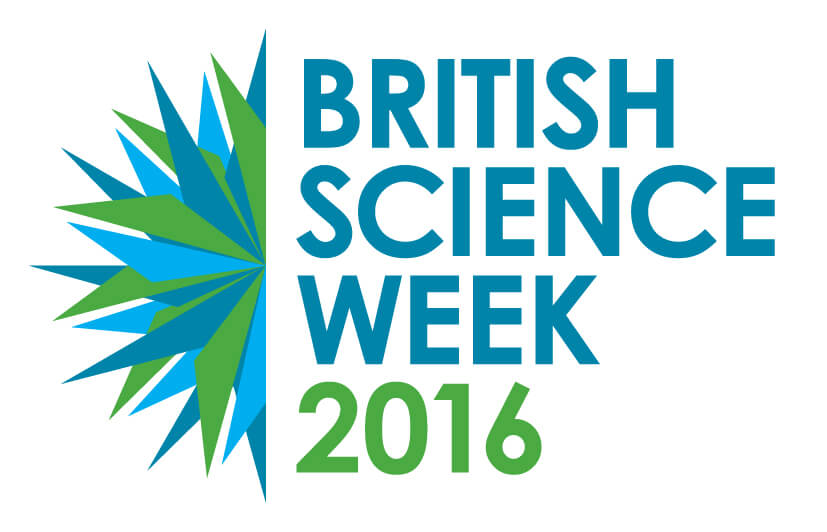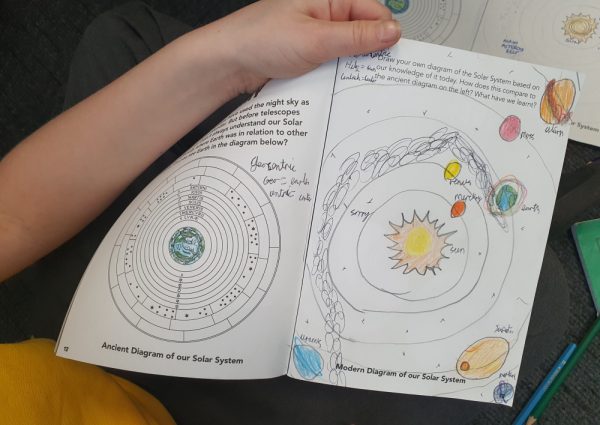Astronomy
This activity will need some adult supervision to assist with cutting and construction.
Chapter 3 of the Space Diary explores things Tim Peake might see from the ISS. He has a very special view of space! From Earth, we can’t see the things in our solar system quite as well, especially if we live in the city. Depending on where you live, you might be able to see the constellation called Ursa Major, also known as the ‘Big Dipper’, if the sky is very dark. This is where a galaxy called the Pinwheel Galaxy is.
But you can build your own Pinwheel Galaxy pinwheel, with the help of NASA. You’ll need a colour copy of the Pinwheel Galaxy printout (available here), a pipe cleaner, some wooden chopsticks or a popsicle stick, some scissors and a hole punch. For detailed instructions on how to make your Pinwheel Galaxy pinwheel, head here.
Engineering for space
This activity is more suitable for older children. It will need adult assistance and supervision, and requires some items which you may not have at home or school.
To get an astronaut safely into space, it takes a big team of clever engineers to design and build a spacecraft, and an even bigger team to co-ordinate blast-off. If you watch the launch of Tim’s Principia Mission, you can see the power needed to shoot a heavy spacecraft through Earth’s atmosphere and into outer space. Watch a clip of Tim’s launch here (https://youtu.be/bSfYdr8Oj9w)
You can build and launch your own spacecraft, with the help of an adult. There might be a few things – like a film canister and antacid tablets – which you don’t have at home or school, so make sure you talk to an adult or teacher beforehand to help you plan your activity.
Details of how to build and launch your own Bubble-Powered Rocket ship are on the NASA website here.
Astrogeology
Younger children will need some assistance with this experiment. It can be messy, so make sure your Space Apprentices have an appropriate place to work!
Planetary geology is an important space science. Geologists examine the structures and surfaces of planets, their volcanoes, moons and the impact of craters on them. Geologists study samples collected during space missions, as well as meteorites that have fallen to Earth, to learn more about the planets in our solar system.
While there are lots of planets in our solar system with volcanoes, astrogeologists are particularly interested in those with active volcanoes, since this is something those planets have in common with Earth. The moons of Jupiter, Saturn and Neptune all have active volcanoes.
You can make your own volcano with everyday items you have at home. Ask an adult to help you create your very own space volcano, by following the instructions here.
Meteorology
Adult supervision is important for this experiment, because it uses boiling water.
Space Apprentices who have researched our solar system will know that the weather on other planets is very different to the weather on Earth. Some planets have extreme solar winds; others have dust storms and hurricanes. Some planets – like Venus – have a thick layer of cloud, which traps heat and creates a greenhouse effect.
You can make your own cloud in a jar with just a few household items. You will need to use hot water in this activity, so it’s important that an adult helps you. By making your own cloud, you can witness firsthand what happens to water as it heats and cools. Next time you look up and the sky and see dark grey rain clouds or fluffy white ones, you’ll be able to tell your friends what’s going on above your head!
To learn how to make a cloud, follow the instructions here.
Biology
Younger children will need some help with this experiment, and all young scientists will need a space where they can make some mess with paint and soil.
Biologists are essential when it comes to space research. Not only do they look at what happens to the human body in space, they also study what happens to plants. This is important because scientists are investigating growing food in space.
There are lots of different challenges associated with growing food in space, because of the lack of soil, direct light, oxygen and gravity. You can explore what happens to plants when their light source is restricted, using a fun phototropism experiment. Plan ahead, because you need to paint some cardboard and wait for it to dry before you can go to the next step. You might like to build your experiment over a few days.
To build your phototropism experiment, click here.



